UL researchers in the natural resources field help ensure that our resources are used wisely and respectfully. In mining engineering and geology, they work with industry to improve productivity and develop new technologies that reduce the risks associated with mineral exploration and worker health and safety and reduce loss during ore processing. In civil engineering, several faculty members specialize in environmental risks and mine site decontamination. And in biology, researchers with an interest in biodiversity are working to conserve threatened wildlife species or reduce the negative impacts of aquaculture on genetic variation in fish.
Explore research on natural resources
The faces of natural resources research
Assessment of environmental risks associated with land use and development
Environmental risks stem from the release of chemical, mineral, and organic products into the environment, and more specifically into the soil, subsoil, groundwater, and air. In order to measure these pollutants, they must be characterized and their concentration must be determined in each environment where they have been introduced. Health inspections help establish standards for community health. Retention ponds and treatment systems are put in place to prevent or mitigate the transfer of pollutants into the environment.
Crops and husbandry: Aquaculture, agroforestry, and beekeeping
Some of our biology researchers are working on crops and animal husbandry to improve the survival of harvested species, genetic diversity, and crop productivity. For example, they are working on solutions for bee colony collapse disorder and selecting strains of aquatic species with highly sought-after characteristics such as disease resistance and rapid growth rates.
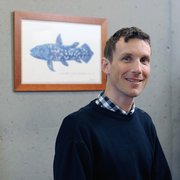
Nicolas Derome, professeur titulaire, Department of Biology
Member of the Institute for Systems and Integrative Biology (IBIS), and Ressources aquatiques Québec (RAQ)
Nicolas Derome works primarily on host-microbiota interactions to predict the contributions of endogenous microbial communities (microbiota) to the biology of their hosts. The symbiotic relationships between microbiota and their hosts can have adaptive benefits because microbiota can encode traits that are absent from their hosts’ genomes. In the course of his research, Nicolas Derome, in conjunction with his co-lead Pierre Giovenazzo and their team, discovered a probiotic in the intestines of bees that protects them from a fungal infection that causes their colonies to collapse.
Design of mine operations and workings
Geomechanics is a mathematical geotechnical specialty that covers soil, rock, and groundwater mechanics as well as seismics. is used to optimize the design of mine workings. It makes it possible to characterize the rock masses that surround mine workings and model and monitor their behaviour. Geomechanics is also used to optimize mining extraction sequences and excavation reinforcements while measuring the associated risks, thereby maximizing mine worker safety and mine profitability.
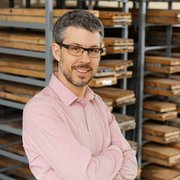
Martin Grenon, professeur titulaire, Department of Mineral, Metallurgical, and Materials Engineering
Member of Centre de recherche sur la géologie et l'ingénierie des ressources minérales and the Centre for Northern Studies
Martin Grenon specializes in the geomechanical design of engineering structures in rock. His projects include the design of mine galleries for deep mines under high stress. One of the goals of the project is to determine the factors that affect the behaviours of rock masses and the effectiveness of mine reinforcement measures in order to ensure worker safety.
Mineral exploration
Mineral exploration involves searching the earth’s crust for metals in sufficient concentration and quantity to warrant extraction and processing. The geological characteristics of mineral deposits are determined through new methods of exploration such as hyperspectral infrared remote sensing, computer vision, drone remote sensing, and indicator minerals. Geochemical methods can detect the primary signature and chemical dispersion of deposits in a wide range of inorganic and organic materials.

Georges Beaudoin, professeur titulaire, Department of Geology and Geological Engineering
NSERC/Agnico-Eagle Industrial Research Chair in Mineral Exploration
Georges Beaudoin specializes in the Metallogeny is the science of metal deposits and their formation. of mineral deposits of base and precious metals. He and his team are developing new exploration methods using mineral indicators that provide relevant information on the richness of geological systems and their mineral resource content. His research chair focuses specifically on exploration for gold deposits.
I appreciate the opportunity to present my work at international conferences and connect with other people in my field of research while developing my scientific skills.
Antoine Gras, former PhD student in earth science supervised by Georges Beaudoin. His research investigated CO2 sequestering in mine tailings.
Graduate studies
Make the leap to graduate studies
Explore our fields of study
Geophysics
Several geophysical methods are used in geological engineering to detect contrasts between the physical properties of mineral deposits and the rock that surrounds them. Gravimetry, radiometry, and measurement of geomagnetism and electrical conductivity, are among the methods used during airborne surveys of areas being explored.
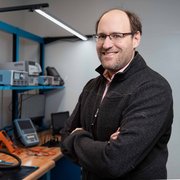
Christian J. Dupuis, professeur titulaire, Department of Geology and Geological Engineering
Director of geology and mineral exploration at Centre de recherche sur la géologie et l'ingénierie des ressources minérales (E4M)
Christian Dupuis studies geophysical methods for characterizing mining deposits. He is an expert on the development of new data acquisition tools and the adaptation of Geophysical logging uses various wave types to measure the characteristics of rocks that are traversed during drilling. to better meet the needs of the mining industry. In 2014 he teamed up with Professor Anton Kepic from Australia to develop an autonomous sonde that collects data during mining exploration. He is also an expert in seismic and seismoelectric methods that help determine where to perform exploratory drilling.
Wildlife management and conservation
Work conducted by some of our biology faculty specialized in wildlife management and conservation seeks to determine the habitat required to ensure their reproduction and maintain their ecological balance without compromising the benefits they provide to humans. They use telemetry, behavioural observation, forest cover assessment, sampling, and tagging to collect essential data on wildlife populations.
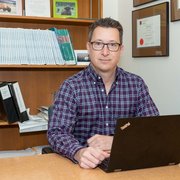
Daniel Fortin, professeur titulaire, Department of Biology
Member of the Centre for Forest Research (CFR)
By improving our understanding of the behavioural mechanisms that account for the distribution of animal populations in various environments, Professor Fortin’s research aims to strengthen wildlife management, preserve environmental biodiversity, and improve our understanding of the spatial and temporal dynamics of ecological systems. His research interests include plains bison ecology and the population dynamics of the woodland caribou.
Ore processing
Ore is processed in several stages. The first, fragmentation, which includes crushing, grinding, and classification, is very expensive and energy-intensive. The second, sorting, involves recovering as many valuable particles as possible while removing gangue particles, which are deposited in a tailings facility or used as underground fill. The next stage is washing, which separates and filters ore in order to retain only its concentrate, which is then refined to increase purity.
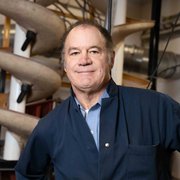
Claude Bazin, professeur titulaire, Department of Mineral, Metallurgical, and Materials Engineering
Director of ore processing at Centre de recherche sur la géologie et l'ingénierie des ressources minérales
Claude Bazin is involved in a number of ore processing, extractive metallurgy, and process stimulation, modelling, and optimization activities. One of his current projects involves reviewing traditional iron ore processing using gravimetric concentration circuits to enrich iron ore concentrate. He is also developing a mathematical model of the hydraulic classifier used in iron oxide mines in order to minimize iron losses during the iron oxide enrichment process that removes quartz.
Looking around the world, you’ll see that a handful of countries dominate mining exploration: Canada, Australia, and the Scandinavian countries. We really are world leaders in the field. There is a direct correlation between the size of a country’s landmass and the abundance of mineral resources.
Georges Beaudoin, professor, Department of Geology and Geological Engineering and NSERC/Agnico-Eagle Industrial Research Chair in Mineral Exploration
